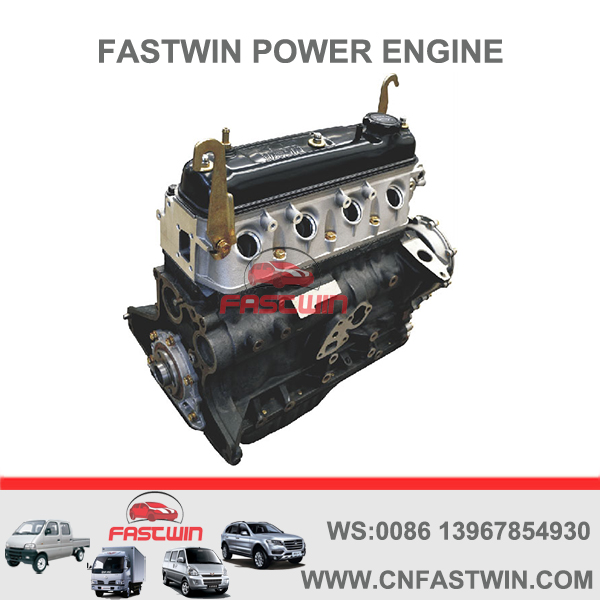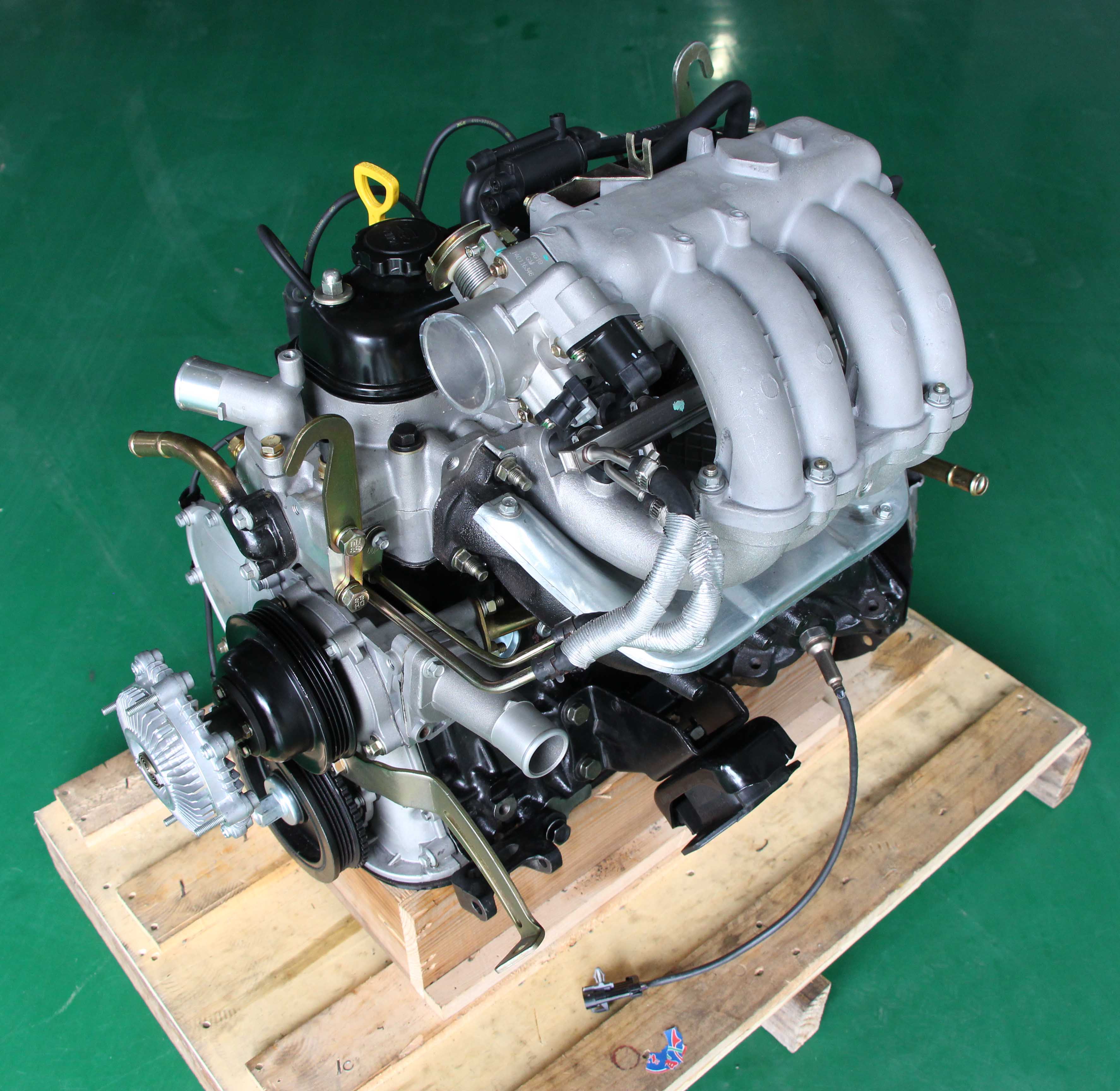How to Troubleshoot Common Issues with the 4Y Engine
Discovering the Various Kinds Of Engine: Which One Fits Your Requirements?
In the pursuit to determine the most suitable engine type for your particular needs, it is important to review the unique qualities and benefits of each choice available. Interior combustion engines remain to dominate because of their dependability, while electric engines are acquiring grip for their sustainability. Hybrid engines provide a flexible compromise, and diesel engines stand apart for their power sought after applications. Additionally, different fuel engines existing innovative services, albeit with certain restrictions. Understanding your concerns will contribute in this decision-making process, causing an exploration of elements that may affect your selection.

Internal Burning Engines
Internal combustion engines (ICEs) are the foundation of modern transport, powering a huge range of vehicles from cars to aircrafts. These engines operate on the concept of converting gas into mechanical energy via a series of regulated explosions within a burning chamber. The most common sorts of ICEs consist of fuel engines, diesel engines, and rotating engines, each created to fulfill certain efficiency and performance needs.
Fuel engines normally utilize stimulate ignition, while diesel motor count on compression ignition, causing unique distinctions in fuel performance and power output (4y engine). Rotary engines, or Wankel engines, supply a compact design and smooth procedure, yet are less generally used in mainstream applications
ICEs have actually undergone significant developments in technology, including the intro of turbocharging and gas injection systems, which improve general efficiency and performance. In spite of their performance improvements, ICEs deal with boosting analysis as a result of their environmental effect, specifically regarding greenhouse gas emissions. As the automobile sector progresses, the future of ICEs continues to be a topic of argument, balancing performance, effectiveness, and ecological considerations. However, they remain to play an important function in international transport framework.
Electric Engines
As problems concerning ecological sustainability and fossil fuel dependence expand, electrical engines have actually become an engaging alternative to inner burning engines. These engines use electric motors powered by batteries or gas cells, providing a cleaner and more reliable motive powers.
Among the main advantages of electric engines is their lowered discharges. Unlike standard engines that melt fossil fuels, electric engines generate no tailpipe emissions, significantly decreasing air pollution and adding to improved public health. In addition, the effectiveness of electric motors often goes beyond that of inner combustion engines, transforming a higher proportion of power from the source of power right into functional energy for activity.
Electric engines are also remarkable for their peaceful procedure, making them ideal for urban environments. 4y engine. The simpleness of their design causes fewer relocating parts, which can cause reduced upkeep costs and raised reliability gradually
Nonetheless, difficulties continue to be, including battery manufacturing impacts, billing framework, and range constraints. Despite these obstacles, the growing investment in electrical vehicle innovation and eco-friendly energy sources factors toward an appealing future for electrical engines, placed to play a vital duty in the transition toward lasting transport.
Hybrid Engines
Blending the advantages of both electrical and typical inner burning engines, hybrid engines stand for a versatile service in the mission for effective and lasting transport. These engines incorporate a gasoline Check Out Your URL or diesel engine with an electric motor, permitting for boosted fuel effectiveness and minimized exhausts contrasted to standard vehicles.
Hybrid engines operate in several modes, utilizing the electric motor for low-speed driving and the internal combustion engine for find out higher rates or when more power is required. This vibrant procedure not just improves fuel economic situation yet additionally adds to a smoother driving experience. Regenerative braking is one more critical attribute, capturing power commonly shed throughout braking and redirecting it to charge the battery.

As consumers progressively prioritize eco-friendliness, crossbreed engines stand apart as a practical option, using a reliable equilibrium of performance, performance, and environmental duty. This versatility makes them suitable for city commuting and long-distance travel alike.
Diesel Engines
Performance and power are hallmarks of diesel motor, which have long been preferred for their robustness and gas economy. These engines operate on the concept of compression ignition, where air is compressed to a high temperature prior to fuel is infused, igniting it without the need for ignition system. This procedure makes it possible for diesel motor to attain higher thermal effectiveness compared to gas engines, converting right into much better gas mileage and lower carbon dioxide discharges.
Diesel engines are particularly appropriate for durable applications such as vehicles, buses, and industrial machinery, where torque and longevity are critical. Their style commonly consists of stronger components to stand up to the greater stress created during operation, resulting in longer solution life and reduced upkeep prices.

Different Gas Engines
While diesel engines have long controlled the landscape of sturdy source of power, alternative fuel engines are acquiring traction as sensible choices for a more lasting future. These engines utilize a variety of gas, such as compressed natural gas (CNG), ethanol, hydrogen, and gas, intending to minimize greenhouse gas emissions and dependence on fossil fuels.
One significant benefit of alternative gas engines is their prospective to reduced carbon footprints. CNG engines release fewer contaminants compared to standard diesel engines, making them suitable for metropolitan transportation systems and fleets seeking to boost air quality. Ethanol, originated from biomass, not only minimizes emissions however additionally supports farming economies.
Hydrogen gas cells represent a sophisticated development in this world, supplying zero-emission power through a chemical reaction in between hydrogen and oxygen. However, difficulties such as framework development and production expenses continue to be obstacles to widespread fostering - 4y engine.
Verdict
Internal burning engines supply integrity, while electric engines focus on sustainability and lowered upkeep. Crossbreed engines combine the advantages of both, boosting performance, whereas diesel engines supply remarkable power and torque for durable applications.
Hybrid engines offer a functional concession, and diesel engines stand out for their power in demanding applications. The most common kinds of ICEs consist of gasoline engines, diesel engines, and rotary engines, each made to satisfy particular efficiency and performance requirements.
Unlike conventional engines that burn fossil gas, electrical engines produce absolutely no tailpipe discharges, substantially lowering air contamination and contributing to improved public wellness.Hybrid engines run in a number of settings, using the electric motor for low-speed driving and the interior combustion engine for higher rates or when more power is required. Hybrid engines incorporate the advantages of both, boosting effectiveness, whereas diesel engines give remarkable power and torque for heavy-duty applications.